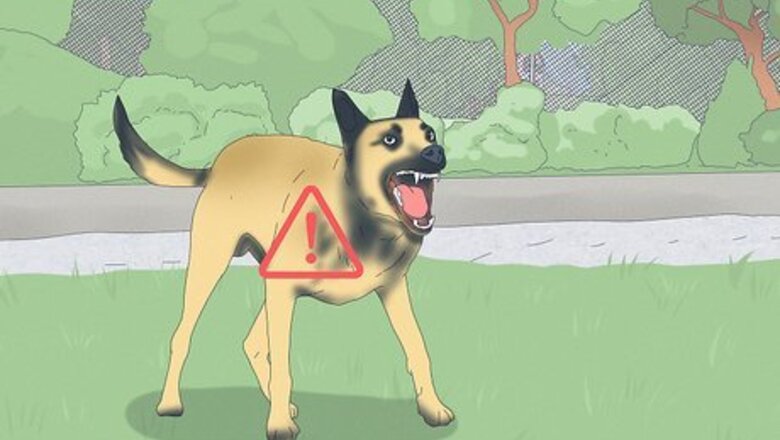
views
Protecting Your Dog
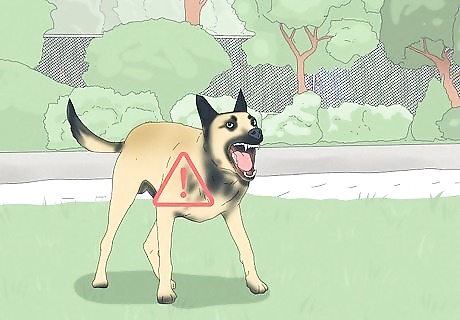
Know the signs of aggression in dogs. By noticing signs of aggression in other dogs, you can quickly remove and protect your dog from a potential attack. Aggression in dogs usually begins with warning signs and then culminates into an attack. However, the time between warning signs and an attack can be very quick. For example, it can be as quick as two to three seconds. Here are some signs of aggression in dogs: The dog’s body becomes very still and rigid. The dog makes threatening sounds, like guttural barks. The dog begins to snarl, i.e., growl and show teeth. The dog begins to lunge forward or charge at you and your dog. The dog tries to make itself look bigger by raising its ears up and forward, by making the fur on its back and tail stand up, and by raising its tail straight in the air.
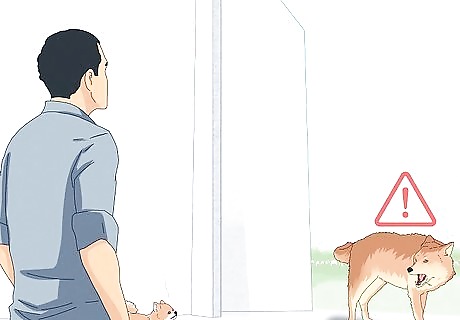
Remain calm. If another dog begins showing signs of aggression toward you and your dog, try not to get anxious, angry, or fearful. Your dog, as well as the aggressive dog, can read your energy. If you become fearful, anxious, or angry, your dog will sense this and become anxious. The other dog will be able to sense your fear or anxiety, as well. Your fear, anger, or anxiety can encourage or provoke the other dog to attack. Do not yell or scream at the aggressive dog or your dog. Take a couple of deep breaths and tell your dog, “It’s ok,” in a reassuring tone. You can calmly and firmly say, “No,” to your dog, as well as the other dog.
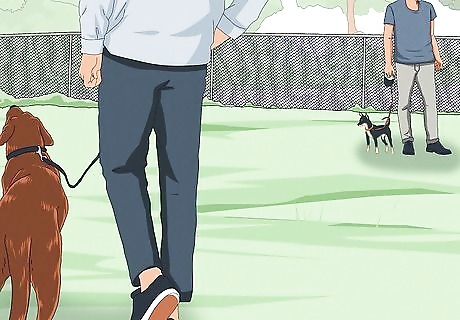
Create space. Create space between you and your dog, and another person and their dog, by moving across the street to the other sidewalk. If you cannot move across the street, create space by standing in front of your dog. You can also create space by moving into a driveway or a lawn to let the other dog and their owner pass. Or, go behind a car.

Pick up your dog. If an aggressive dog is already lunging or running toward you and your dog, pick up your dog immediately. Do not run the other way, or turn your back. This will prompt the dog to either chase you, or attack your back. Simply scoop up your dog and remain calm. Put your hands over your dog’s eyes and face. Firmly tell the aggressive dog (without yelling), “No,” “Leave it,” or “Stop.” Stand your ground. Slowly back away from the dog until the owner has regained control of their dog.
Preventing an Attack
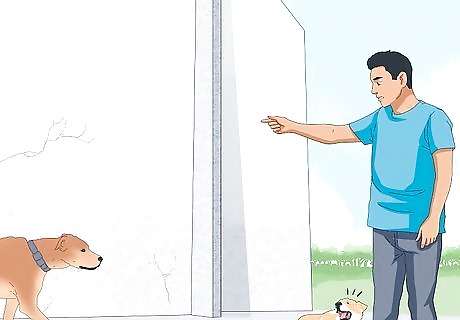
Be aware of off-leash dogs. If an off-leash dog begins to approach your dog, command the dog to “Sit,” “Leave,” or “Go home.” To further you message, raise your hand in a “stop” signal, and reinforce it with “No.” If you have doggie treats, put out some treats to distract the approaching dog. If the dog falls for the bait, keep moving past it. Try to create as much distance as you can between your dog, and the off-leash dog. If the dog keeps following you, head home.
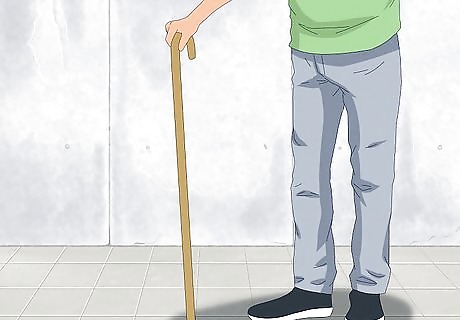
Carry a stick with you. There are times when avoidance tactics just don’t work. To prepare for these situations, carry a stick with you. Carry a stick that is at least an inch in diameter and two feet long, like a walking stick, cane, twirler’s baton, or PVC pipe. The point is to make the stick an obstacle the aggressive dog has to overcome, not a weapon. When an aggressive dog approaches, point the stick at the dogs nose. If the dog stops advancing, take small steps toward it while still pointing the stick at the dog’s nose. If the dog backs up, take another small step. Repeat this until the dog backs down. If the dog does not back down, keep the stick pointed at its nose. Do not swing the stick because it leaves you open for attack, and you could hurt the dog. The point is to have the dog grab the stick with its mouth so that its mouth is preoccupied. Once the dog grabs the stick, do not pull back. Wait for the dog to pull, and when it does, take a step forward. This will push the stick into the dog’s mouth, but be careful not to hurt the dog. Repeat this until the dog backs down.
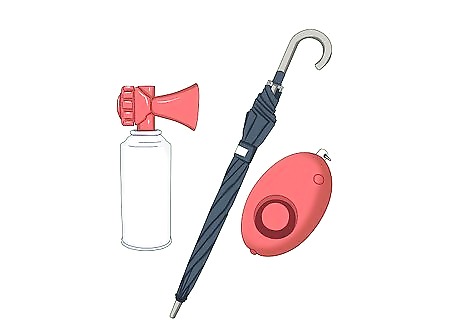
Carry other protective devices. Other devices that will help deter aggressive dogs are air horns, rape alarms, and umbrellas. The loud sound produced by an air horn or a rape alarm will startle an approaching dog, and hopefully deter it from advancing. On the other hand, an umbrella is useful in either frightening the dog, or creating a barrier. When a dog is approaching, open the umbrella in front of the dog.
Training Your Dog
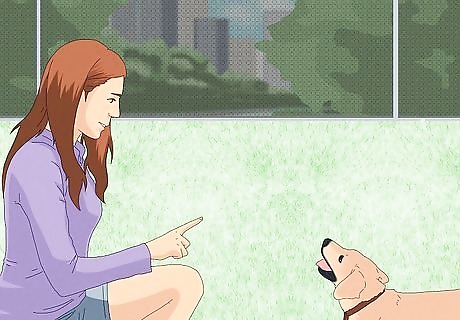
Teach your dog indifference. Train your dog to avoid other dogs, unless you say it is ok to initiate interaction. Teaching your dog how to be indifferent to another dog, especially if it is aggressive, will decrease the chances of an aggressive interaction. When encountering another dog and its owner, keep your eyes forward, and do not look at the other owner or their dog. Keep walking at a natural pace. Reward your dog with a treat if they show indifference to the other dog. If your dog begins staring, obsessing, or interacting with the other dog without your permission, tell your dog to “Sit” and refocus its attention on you. Once your dog sits and the other dog has passed along. Give your dog a treat for obeying.
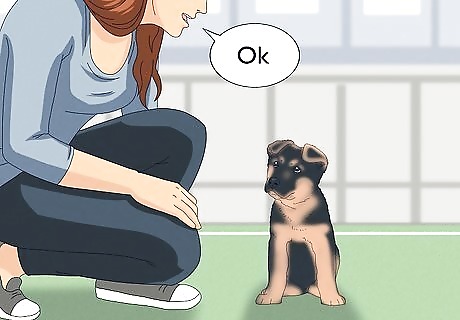
Know how to calm your dog. Training your dog to sit, stay, and get up when told is an effective way to calm and reassure your dog. At home, practice telling your dog to sit. Every time he sits, give him a reward, like a treat. Also, practice telling him commands like “Yes” or “Ok,” so it knows that your are the final authority on when to get up. Training your dog reassures your dog that, if it encounters a negative situation, you will handle it for him. This prevents your dog from feeling like it needs to defend itself. If your dog feels as if you cannot protect it, any sign of aggression from another dog will provoke aggression in your dog.
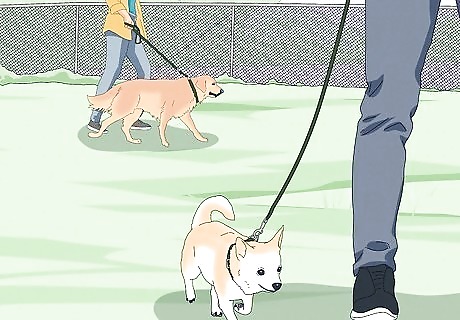
Keep greetings short and sweet. Prevent your dog from getting overexcited at the sight of another dog by keeping greetings between your dog and other dogs brief and positive. While your dog is saying, "Hello," to another dog, keep the interaction brief by positively interrupting your dog to refocus its attention on you. Once your dog has met a dog, interrupt it and regain your dog’s focus for a few seconds. A positive, interruptive command could be something like, “Hey, hey” or “Come on.” Gently tug your dog’s leash to move him away. Reward your dog’s good behavior.













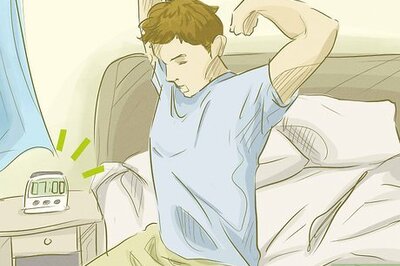






Comments
0 comment